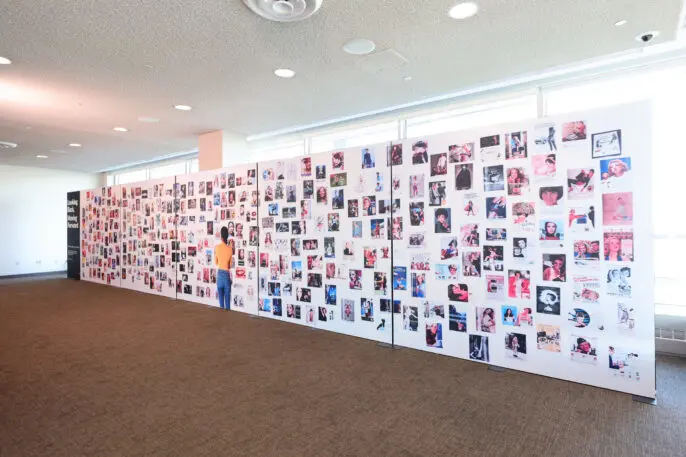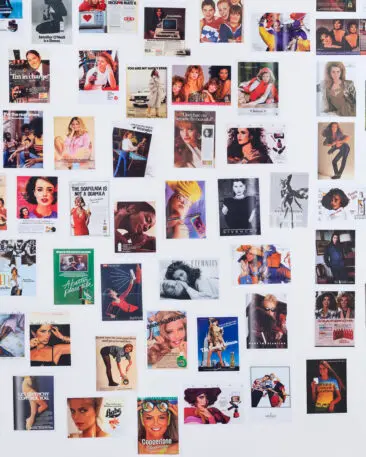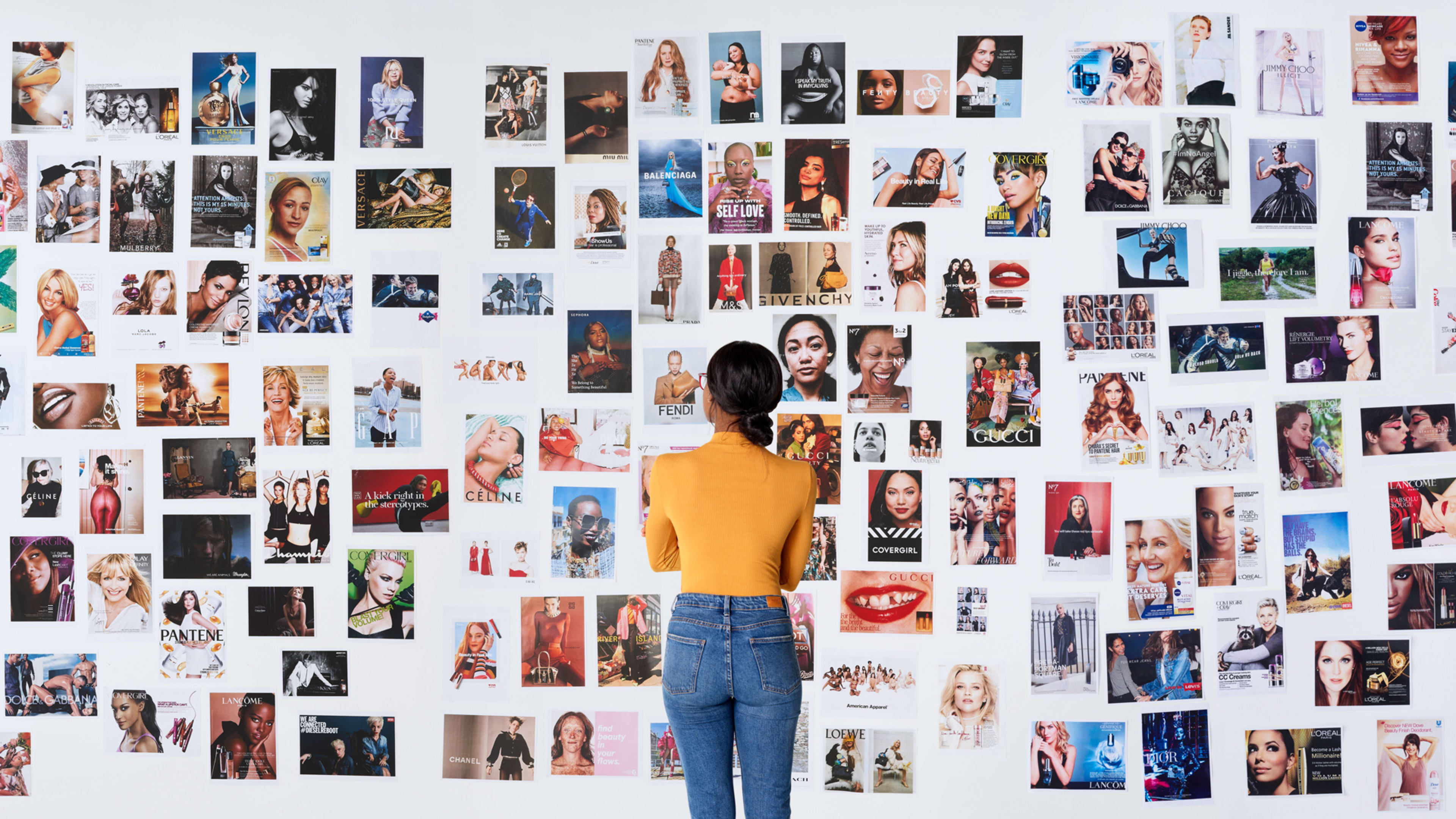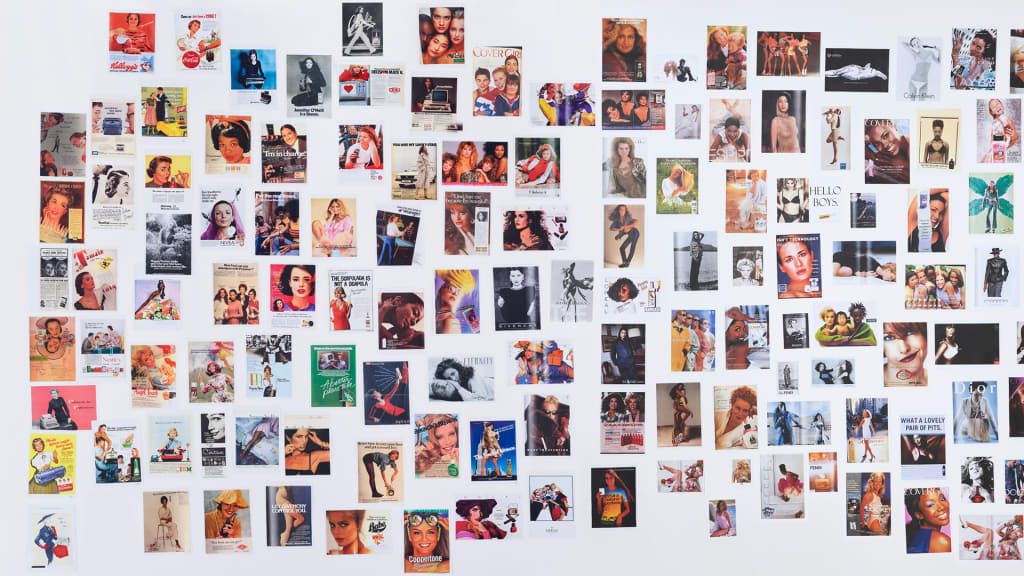For decades, media images have presented women as primarily white, thin, and young, with long hair and form-fitting clothing, often working in the kitchen or putting on makeup. These images, whether on social media or inside magazines, push standards of beauty and feminine ideals that perpetuate stereotypes and can have a negative impact.

But there’s also been a shift in recent years in the way the advertising industry portrays women, with increased representation of women of color and across age and size ranges. A new artwork from Getty Images shows that shift, and the history of stereotypical portrayals, by laying out hundreds of images of print advertisements depicting women from 1945 to 2022.

Called Looking Back, Moving Forward, the mural, which stretches nearly 40 feet long and 8 feet fall, is a photograph of a woman looking at those advertising images, with ones from the present day at the center, and extending out into the past on either side. It comes via a partnership between Getty Images and the Unstereotype Alliance, an initiative by U.N. Women that brings together advertising industry leaders and decision-makers to end harmful stereotypes in advertising.
“The conversation around the depiction of women has seen this everlasting debate,” says Rebecca Swift, global head of creative insights at Getty Images, who was involved with the project. It’s something she’s been trying to change at Getty, through projects like a collection of images focused on women in business with LeanIn.Org and the #ShowUs collection in partnership with Dove and Girlgaze, a library of photos of diverse women to “show a more inclusive vision of beauty.”
For Looking Back, Moving Forward, Getty’s creative insights team dug through archives of U.S. and U.K. ads, reviewing 5,404 campaigns from 1945 to 2022, and ultimately picking around 500 images to include.
“This piece has allowed us to do the research and look back over 77 years, but also to lay it all out,” Swift says. “The size and scale of this image is a great [indication] of how powerful advertising is, and how even when you’re looking at today’s advertisements [there’s a] legacy that has come behind that.”
With that timeline laid out, Swift also noticed some shifts in advertising: how the rise of social media brought “more authentic visualizations of a broader range of women,” and how the #MeToo movement correlated with an evolution not just in photography style but also diversity across race, body shape, age, and disability.

The biggest change across the 77 years of media actually occurred in the last two years, she says, with three times as much Black representation, and more representation of women over 40, as well as greater diversity in body shape since the pandemic began. (The piece was originally created to be unveiled at the United Nations headquarters in New York in 2020 but had to be shelved when the pandemic hit; the Getty team updated it ahead of this year’s Unstereotype Alliance Global Member Summit to include images from the last two years.)

“That’s not to say that everything’s solved,” Swift says, “but I think there’s much more awareness of broader inclusivity, and we’re starting to see the results of consumers, or the audience, or women themselves being very vocal about what they want to see and their expectations of what advertising should be.”
Swift’s goal is for the piece to travel beyond New York City to be exhibited in other locations so that more people can see it in person as well as online.
Recognize your brand’s excellence by applying to this year’s Brands That Matter Awards before the early-rate deadline, May 3.



